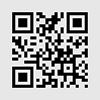
8
XENYX X1222USB User Manual
MON SEND
The aux send control MON SEND acts as master control for the monitor bus and
determines the level of the summed signal that is taken from the mixer via
the MON SEND connector and that can for example be fed to an amplifier for
monitor purposes.
Using the audio signal from this output, you can also feed a subwoofer if you
don’t require stage monitors. To this end, you should implement a crossover in
your signal path pre-subwoofer and pre-amplifier, so that only low frequencies
are fed into the subwoofer. You can achieve the same effect by using the built-in
graphical equalizer. Lower all frequencies above 160 Hz and assign the equalizer
to “Monitor”.
◊
When you use the MAIN MIX fader to reduce the overall volume,
keep in mind that the subwoofer is still receiving a signal!
FX TO MON
You can use this control to insert an effects signal from the built-in effects
processor to your monitor mix. Of course, to do this, your effects processor must
first receive a signal, i.e. the FX controls in the channel strips must be turned up,
and the FX SEND fader (see fig. 2.6) hast to be open.
MON MUTE
If the MON MUTE switch is pressed, the monitor bus is muted, i.e. there is no
signal at the MON SEND connector.
FX SEND
The FX SEND fader determines the overall level of the effects bus. Both external
effects processors (via the FX SEND connector) and the built-in processor only
receive an input signal if this control is open.
FX TO MAIN
Use the FX TO MAIN control to feed the effects signal into the main mix.
If the control is turned all the way to the left, no effects signal can be heard.
FX MUTE
If the FX MUTE switch is pressed, the effects channel is muted, i.e. no signal is
present at the FX SEND connector and the effects processor no longer receives an
input signal.
2.3.2 Monitor send and FX send connector
Fig. 2.7: Aux send connectors MON and FX
MON SEND
Connect the input of your monitor power amp or an active monitor system here
to make the monitor mix audible to the musicians on the stage. The signal mix is
created using the channels’ MON controls.
FX SEND
The FX SEND connector outputs the signal you picked up from the individual
channels using the FX controls. You can connect this to the input of an external
effects device in order to process the FX bus’ master signal. Once an effects mix is
created, the processed signal can then be routed from the effects device outputs
back into the AUX RETURN connectors.
◊
If the connected effects processor receives no input signal, the FX MUTE
switch is probably pressed and/or the FX SEND control is too low.
This also goes for the built-in effects processor.
◊
Adjust your external effects processor to 100% wet (effects signal only),
because the effects signal is added to the main mix along with the
“dry” channel signals.
2.3.3 Aux return connectors
Fig. 2.8: Aux return connectors
AUX RETURN 1
The AUX RETURN 1 connectors generally serve as the return path for the effects
mix generated using the FX send. This is where you connect the output signal
of the external effects device. If only the left connector is used, the aux return 1
automatically operates in mono.
◊
You can also use these connectors as additional line inputs.
AUX RETURN 2
The AUX RETURN 2 connectors are used exactly the same way as the AUX RETURN
1 connectors. If these connectors already function as additional inputs, you
can route the effects signal back into the console via a different stereo channel,
with the added benefit that the channel EQ can be used to adjust the frequency
response of the effects return signal.
◊
In this instance, the FX control of the channel being used as an effects
return should be turned fully counter-clockwise, otherwise feedback
problems can occur!
2.3.4 CD/tape return channel, voice canceller and
connection socket
Fig. 2.9: CD/tape return channel
This channel, intended especially for connecting stereo signal sources
(CD players, DAT recorders or even sound cards) features a particularly
practical feature: the VOICE CANCELLER.
